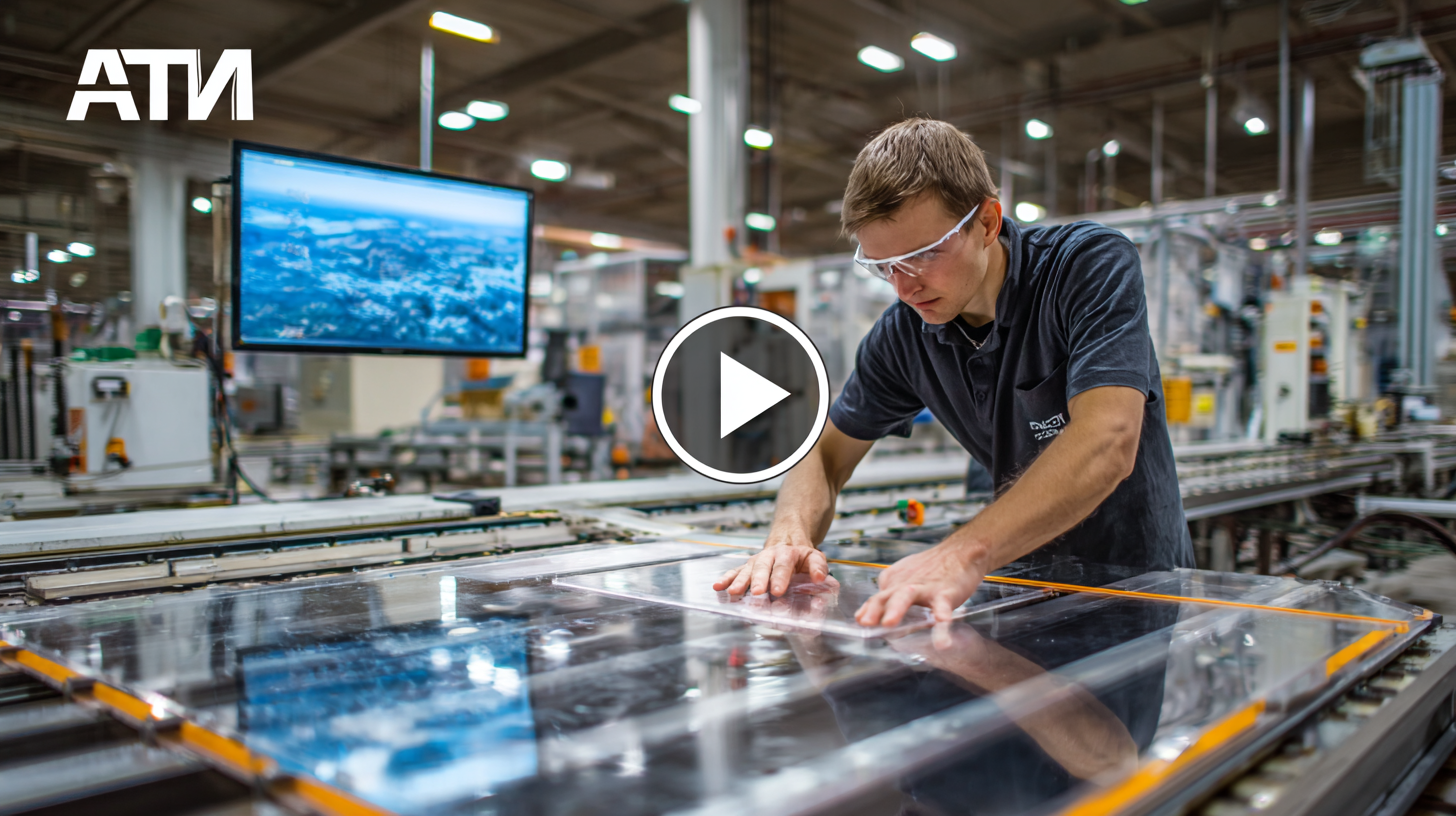


As we approach 2025, the landscape of various industries is poised for transformation, largely driven by innovative materials like Acrylic Boards. According to a recent market analysis by Research and Markets, the global acrylic sheet market is projected to reach $8.1 billion by 2025, reflecting a compound annual growth rate (CAGR) of 6.4%. This surge is attributed to the versatile applications of Acrylic Boards across sectors such as construction, automotive, and signage, where their lightweight, durability, and superior clarity provide significant advantages over traditional materials. Industries are not only adopting these acrylic solutions to enhance performance but also to improve sustainability practices, as acrylic is recyclable and can contribute to a reduced carbon footprint.

This blog will delve into the profound benefits of Acrylic Boards, offering insights on how businesses can leverage their unique properties to revolutionize operations and drive growth in the coming years.
Acrylic boards are rapidly becoming a game-changer in various industries, thanks to their exceptional versatility and performance characteristics. According to a recent market report by Research and Markets, the acrylic sheets market is projected to grow significantly, with a compound annual growth rate (CAGR) of 5.2% from 2020 to 2027. This growth highlights the increasing demand across sectors such as automotive, construction, and healthcare, where acrylic is valued for its lightweight nature, impact resistance, and optical clarity.
One of the key benefits of acrylic boards is their ability to be easily customized for different applications. For instance, in the signage industry, acrylic’s vibrant colors and excellent light transmission make it ideal for eye-catching displays. In the construction sector, their durability and weather resistance allow for extensive use in windows and facades. To leverage the advantages of acrylic boards, businesses should consider implementing them into their designs early in the planning phase to maximize cost-effectiveness and aesthetic appeal.
**Tips**:
- When selecting acrylic boards for your projects, ensure you choose high-quality options that boast UV resistance to prevent discoloration.
- Always consult with a materials specialist to understand the best thickness and finish for your specific application, enhancing both performance and visual impact.

Acrylic boards are transforming various industries in 2025 due to their exceptional key characteristics:
strength,
clarity,
and
durability.
These attributes make acrylic sheets an ideal choice for a range of applications, from signage and displays to architectural elements and automotive parts.
The strength of acrylic boards allows them to withstand forces that might shatter glass, making them safer and more reliable in demanding environments.
Moreover, their clarity ensures excellent light transmission, enhancing visibility in both commercial and residential settings.
In addition to these physical properties, acrylic's durability is a game-changer for long-term usage.
Unlike traditional materials, acrylic is resistant to UV light and weathering, maintaining its appearance and structural integrity over time.
As industries look for materials that offer longevity without compromising on aesthetics, acrylic boards stand out as the preferred option.
The growth projections for the acrylic sheet market reflect the increasing demand, with a significant
CAGR indicating that businesses are recognizing the myriad advantages of integrating acrylic into their operations.
With continued innovation in manufacturing and application, acrylic boards are set to lead the way in industrial revolutionizing by 2025.

When considering the plethora of acrylic boards available in the market, it's essential to weigh their various types and characteristics to find the most suitable option for your project. Acrylic sheets come in several forms, including cast, extruded, and reflective acrylic. Cast acrylic offers superior clarity and durability, making it an excellent choice for display cases. Extruded acrylic, while more cost-effective, may not provide the same level of impact resistance. Reflective acrylic is perfect for signage and design, as it adds a striking visual element while ensuring durability.
Tip: Always assess the intended use of the acrylic board. For projects requiring high transparency and strength, opt for cast acrylic. If you’re on a tighter budget but still need some resilience, extruded acrylic might be the way to go.
Another vital aspect to consider is the thickness of the acrylic board. Thicker boards provide greater strength and insulation, ideal for applications like aquariums or architectural features, while thinner sheets are suitable for lighter signs and displays.
Tip: When choosing thickness, think about the environment in which the board will be used. For outdoor applications, thicker boards will generally withstand harsher conditions better, ensuring longevity and performance.
| Acrylic Board Type | Thickness (mm) | Light Transmission (%) | Impact Resistance (kJ/m²) | Temperature Resistance (°C) | Best Use Cases |
|---|---|---|---|---|---|
| Cast Acrylic | 3 - 30 | 92 | 17 | 70 | Signage, Displays |
| Extruded Acrylic | 2 - 20 | 88 | 14 | 80 | Furniture, Lighting |
| PMA Acrylic | 5 - 25 | 90 | 15 | 60 | Aerospace, Automotive |
| Anti-Reflective Acrylic | 4 - 20 | 92 | 18 | 75 | Photography, Displays |
In 2025, the innovative applications of acrylic boards are set to transform various industries, creating exciting trends that will enhance functionality and aesthetics. The versatility of acrylic materials, often referred to as PMMA, positions them as vital components in sectors ranging from automotive to consumer electronics. Notably, the acrylic adhesives market is projected to reach USD 4.1 billion by 2035, driven by the increasing demand for strong, durable bonding solutions that enhance product performance. The rise of eco-friendly practices within these industries further amplifies the appeal of acrylic boards, as they can be manufactured with sustainability in mind.
Furthermore, the advancements in acrylic sheet manufacturing are introducing new possibilities for design and application. With major growth in markets such as adhesive tapes and polymer binders, the use of acrylic boards in packaging and construction is expanding rapidly. The expected growth of these markets highlights a trend towards increasing efficiency and sustainability. As industries increasingly leverage the advantages of acrylic boards, innovations in their production and application will undoubtedly lead to groundbreaking developments in product design and technology, making 2025 a landmark year for these materials.
Acrylic boards are at the forefront of innovative solutions in various industries, particularly in achieving cost-effectiveness and sustainability. Their versatility makes them suitable for applications ranging from construction to packaging. One significant advantage of acrylic is its lightweight nature, which helps reduce transportation costs and energy consumption. Additionally, acrylic materials are often more affordable than traditional alternatives, making them an attractive option for businesses looking to maintain budget efficiency while committing to environmentally friendly practices.
To maximize the benefits of using acrylic, consider these tips:
First, choose high-quality acrylic sheets to guarantee durability and performance. This ensures that the investment provides long-term savings by minimizing the need for replacements.
Second, explore options for recycling acrylic waste, as this supports a circular economy and reduces environmental impact.
Lastly, implement controlled-release solutions, such as those seen in fertilization innovations, to optimize the use of acrylic in areas like agriculture and packaging.
By harnessing these strategies, industries can fully leverage the advantages of acrylic boards while promoting sustainability.